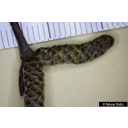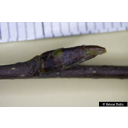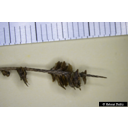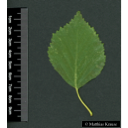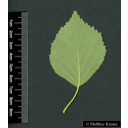Useful information about the taxon (species, subspecies, variety...)
Betula pendula Roth 1788
Betulaceae
(APG IV)silver birch
Akzessionnummer: EG-H-035-20045
Pflanzjahr: 1932
Taxon concept: The Plant List (2014), version 1.1
Distribution: Europe, West Siberia, Turkey, North Iraq, Caucasus, North Iran, Morocco
Size: 10 - 25 (m)Flowering period: IV - V
Betula pendula Roth - Accepted: Betula pendula Roth bei Zander 2008; Familie: Betulaceae (Zander 2008)Betula pendula Roth - Accepted: Betula pendula Roth bei The Plant List (2010); Familie: Betulaceae (APG III)Betula pendula Roth - Accepted: Betula pendula Roth bei The Plant List (2014), version 1.1; Familie: Betulaceae (APG III)Betula verrucosa Ehrh. - Synonym: Betula pendula Roth bei Zander 2008; Familie: Betulaceae (Zander 2008)Betula pendula Roth - Accepted: Betula pendula Roth bei The Plant List (2010); Familie: Betulaceae (APG IV)Betula pendula Roth - Accepted: Betula pendula Roth bei Schmeil-Fitschen 2019; Familie: Betulaceae (APG IV)Betula pendula Roth - Accepted: Betula pendula Roth bei BfN Checklist Flora DE; Familie: Betulaceae (APG IV)Betula pendula Roth - Accepted: Betula pendula Roth bei World Flora Online - APG IV (Angiosperms); Familie: Betulaceae (World Flora Online - APG IV (Angiosperms))
- Color of flower
- greenish
- Flowers
- monoecious; male flowers in hanging catkins and female flowers in erect catkins
- Flower ecology
- wind-pollinated (anemophilous)
- Life form
- woody, tree
- Leaves
- triangular shape, coarsely double serrate, 3-7 cm in size
- Foliage persistence
- deciduous
- Fruits
- winged nut fruits (samaras)
- Fruit ecology
- wind-dispersed (anemochorous)
- Soil conditions
- predominantly on moist to dry, moderately nutrient- and more or less alkaline-poor, mostly more or less acidic, humus-rich soils of all kind, with preference to sandy soils
- Light conditions
- full sun, leaved wood
- Root type
- intensely shallow-rooted
- Succession type
- pioneer species, accessorial wood
- Natural occurrence (habitat)
- pollarded deciduous and coniferous woodlands, pioneer forests, acidophilous oak forests, bogs, rough pastures, heathlands, quarries, burned areas in bogs; at more or less humid climate sites; from lowland to highland
- Comment to ecology
- low demands on soil quality; hardy; soil stabiliser
- Vegetation typ and synecology (plant community)
- temperate broad-leaved deciduous forests to boreal coniferous forests; in pioneer forest communities of the Quercion robori and Luzulo-Fagenion
- Constraints according soil conditions
- not salt tolerant
- Constraints according radiation (light)
- intolerant of shade
- Recommendation (regional context)
- only limited suitable as urban tree
- Life span
- up to 150 years old
- Usage
- wood is used for veneer; sap is used in cosmetic industry for the production of hair tonic
- Phytopathogenic organisms
- can be affected by birch rust caused by the fungus Melampsoridium betulinum
- Bark
- smooth, silvery-white with horizontal dark grey lenticels
Erhardt, W., Götz, E., Bödeker, N. & Seybold, S. (2008): Der große Zander. Enzyklopädie der Pflanzennamen. Band 2. Arten und Sorten. Eugen Ulmer KG, Stuttgart (Hohenheim), 18. Aufl., 2103 S.; Haider, M. et al. (2005): Wildbienenkataster. See: https://www.wildbienen-kataster.de; Maurizio, Anna et al. (1982): Nektar und Pollen - die wichtigsten Nahrungsquellen der Honigbiene. 4. Ehrenwirth, München, 3, überabeitete Auflage; Oaks of the World (Accessed: 2018): Quercus mexicana. See: http://oaks.of.the.world.free.fr/quercus_mexicana.htm; Pritsch, Günter et al. (1985): Bienenweide.. Neumann-Neudamm, Melsungen; Ruppertshofen, Heinz et al. (1995): Der summende Wald - Waldimkerei und Waldhygiene.. Ehrenwirth, München, 8., völlig neubearb. und erw. Aufl.; Schick, B. & Spürgin, A. (1997): Die Bienenweide. Eugen Ulmer Verlag, Stuttgart, Auflage: 4., völlig neubearb. u. erw. A., 216 S. 978-3800174188.; Westrich, P. et al. (2018): Die Wildbienen Deutschlands.. Ulmer Verlag ISBN 978-8186-0123-2.;
Diese Webseite verwendet Google Maps, um Karten und Standorte von Pflanzen in den Hohenheimer Gärten anzuzeigen. Dadurch werden unter Umständen Daten an Google weitergeleitet, was mit einer Verarbeitung Ihrer personenbezogenen Daten verbunden sein kann. Die Datenschutzerklärung von Google finden Sie hier: Datenschutzerklärung von Google

